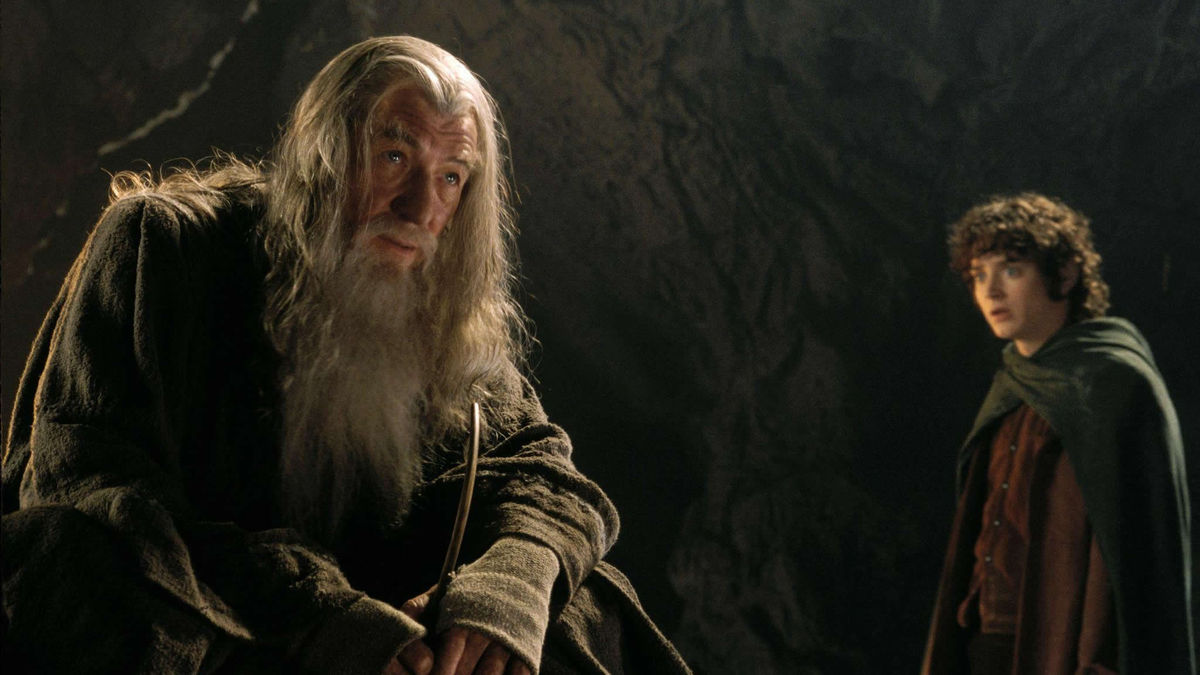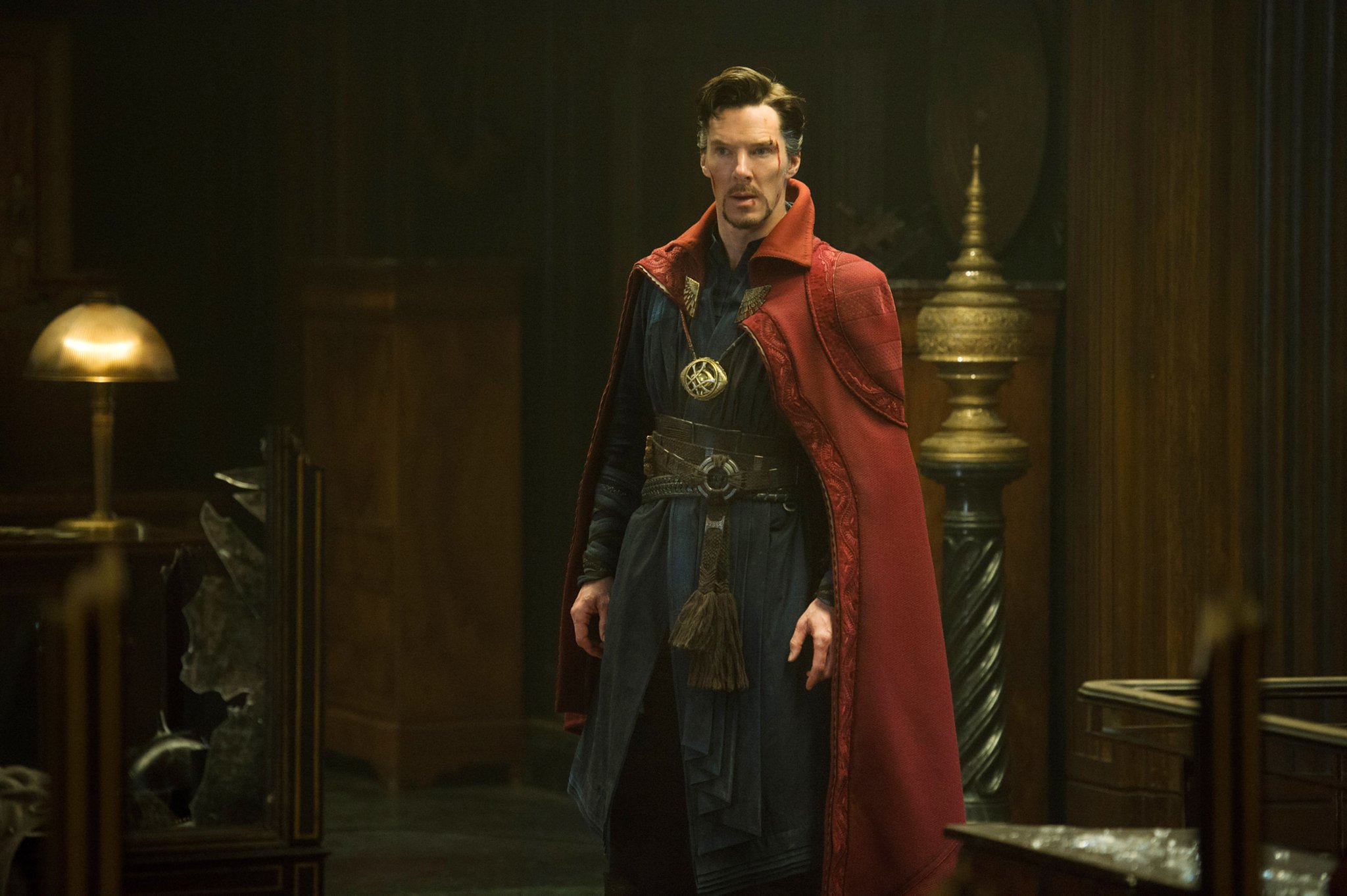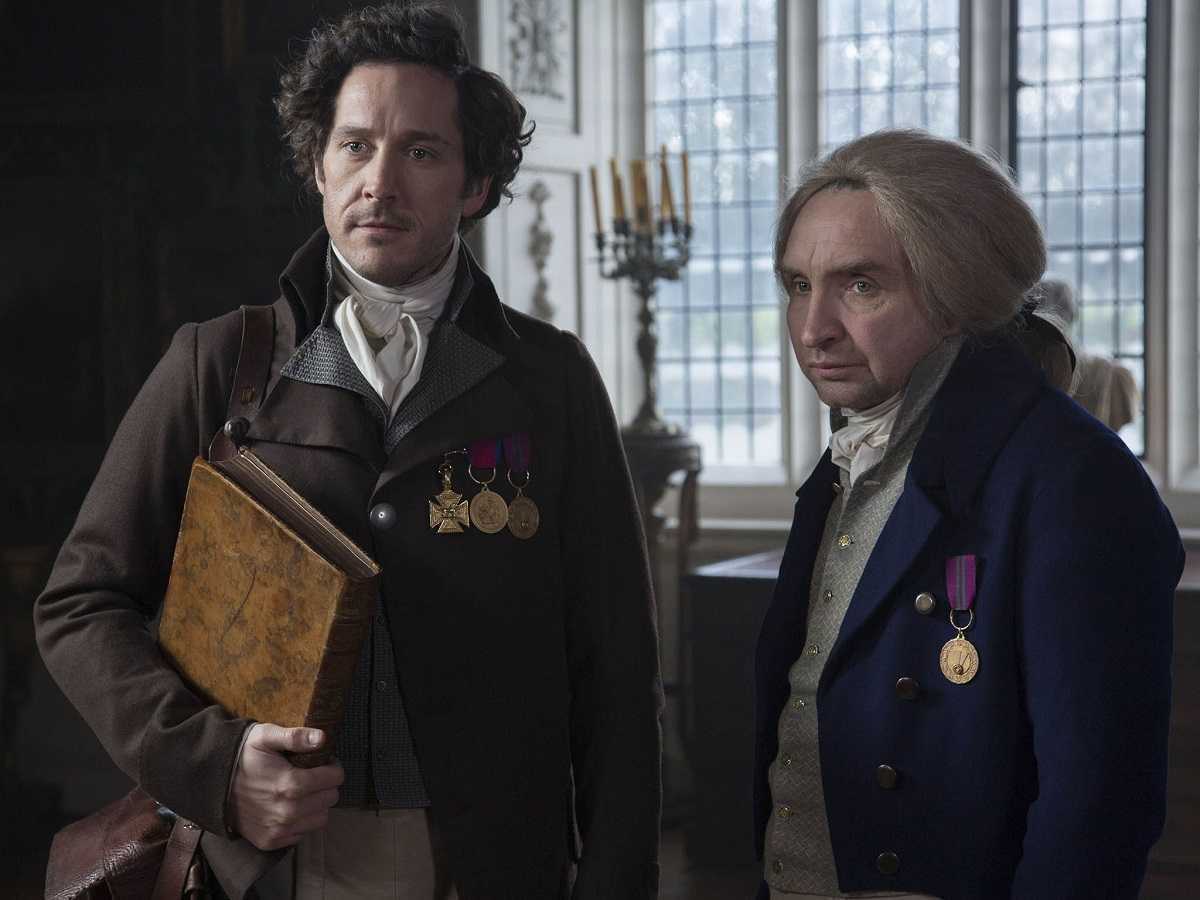The term magician refers to people who wield magic. The term is synonymous and interchangeable with other phrases like wizard, sorcerer or magic user. This essay is a detailed look at films about magicians and sorcerers and the different ways that they are portrayed.
The cliche figure of the magician is Merlin or Gandalf in long beard, robes and pointy hat, although this has dropped off in recent years and we have had more diverse portrayals. Magicians are most commonly found in Epic Fantasy settings, although of recent there have been a number of works that take place in contemporary and urban settings, most notably the phenomenal success of the Harry Potter films.
Magicians are commonly taken to be a male practitioner of the craft. A female practitioner of magic is usually referred to as a witch or a sorceress, although there have been a number of works in which female magicians feature – Hermione in the Harry Potter series is the most obvious example and other female magicians feature in Dungeons & Dragons (2000) and the Mythica films. The site does include a separate entry on Witches – see Films About Witches – as their portrayal on screen is often seen as something very different to simply being a magician with the gender roles swapped. Gender division into witch and wizard seems to be an essential fact of the genre – Kiki of Kiki’s Delivery Service (1989) is an Apprentice Magician story in every essential way but she is defined as a witch rather than a magician by the sole fact that the character is female. A male equivalent of a witch is generally referred to as a warlock.
For discussion of the process of how magic works see Films About Magic. For the incantation of rituals designed to conjure magic see Films About Magic Spells. Objects imbued with magical power that are of great boon to usually a non-magical user are discussed under Films About Magical Artifacts. Discussion of the black arts can be found under Films About The Occult and Black Magic.
Magicians in Fantasy
A magician of some sort can be fairly much guaranteed to join any party on a quest in an Epic Fantasy film that is one of Films That Take Place in Fantasy Otherworlds. See examples such as Sinbad and the Eye of the Tiger (1977), The Lord of the Rings (1978), Conan the Barbarian (1982), Krull (1983), Conan the Destroyer (1984), The Lord of the Rings films beginning with The Lord of the Rings: The Fellowship of the Ring (2001), Dungeons & Dragons (2000), Eragon (2006) and Mythica: A Quest for Heroes (2014) and sequels.
Portrayals of Merlin the Magician – see Films About the Arthurian Legends – do not always follow this trope. There have been a diverse variety of portrayals of Merlin, ranging from The Sword in the Stone (1963) and Merlin (1998) where he is a wisely mentor in what is essentially Arthur’s Coming of Age story to Camelot (1967) where he has the unique ability to travel back in time to the buffoonish comic villain who is revealed to be a fraud in A Connecticut Yankee in King Arthur’s Court (1949). The finest of the portraits was Nicol Williamson in Excalibur (1981) where Merlin was seen as a wisely figure straddling the passing of the end of the old ways and the ascendency of Christianity.

Another trope, frequently found in Young Adult Films, is that of the Apprentice Magician who is just starting to learn the craft. The story becomes a bildungsroman or Coming of Age story as we follow the course of their learning, the disasters caused by inexperience to their eventual maturation. Examples include The Sorcerer’s Apprentice episode of Fantasia (1940), The Sorcerer’s Apprentice (1978), The Sorcerer’s Apprentice (2002), Earthsea (2004), The Sorcerer’s Apprentice (2010), the tv series The Magicians (2015-20), The Last Dragonslayer (2016), The House With a Clock in Its Walls (2018) and the Mythica films.
The two finest works among this were Dragonslayer (1981) with Peter MacNichol struggling to complete his late master’s task to slay a dragon and the beautiful animated The Last Unicorn (1982) with an apprentice trying to protect the very last unicorn. There has been the enormous popularity in recent years of the Harry Potter films beginning with Harry Potter and the Sorcerer’s Stone (2001), which is a saga built around this very trope.
Black Magicians
A common trope is that magicians are divided into two camps between White and Black magic. White magicians are usually seen as wise, steeped in arcane lore but working towards the greater good. Black magicians have usually stepped over into some form of forbidden knowledge (conjuration of demonic forces, necromancy, unnatural attempts to extend their lifespan and the like). Many Apprentice Magician stories feature a plot in which a youthful magician will unwittingly unleash forbidden magic with disastrous consequences. In works like the Harry Potter series, we see that the white and black sides of magic are at war with one another.
All of the abovelisted would count as works about white magicians. The most famous examples of the black magician would be Voldemort in the Harry Potter films or Saruman in The Lord of the Rings. Examples of black magicians can be found in fantasy films such as The 7th Voyage of Sinbad (1958), Jack the Giant Killer (1962), The Magic Sword (1962), The Beastmaster (1982), The Sword and the Sorcerer (1982), Rock and Rule (1983), Wizards of the Lost Kingdom (1984), Big Trouble in Little China (1986), Warlock (1989), The Heroic Trio (1993), Sex & Zen II (1996), Anastasia (1997), The Mummy (1999), Barbie of Swan Lake (2003), In the Name of the King: A Dungeon Siege Tale (2007), Pegasus vs Chimera (2012), Dragonheart 3: The Sorcerer’s Curse (2015), Warcraft (2016) and The Craft: Legacy (2020).
A sub-category of these would be the numerous evil Viziers who appear in Arabian Nights tales such as The Thief of Bagdad (1940), Captain Sindbad (1963), Arabian Adventure (1979), Sinbad of the Seven Seas (1989), Aladdin (1992) and Aladdin (2019).
There are also a number of horror films featuring black magicians such as The Magician (1926), Manos: The Hands of Fate (1966) Shadow of the Hawk (1976), The Manitou (1978), The Alchemist (1983), Demon City Shinjuku (1988), The Missing (2003), Necronos (2010) and History of the Occult (2020). One black magician portrayed in a surprisingly sympathetic light was Javier Bardem’s Santeria sorcerer Romeo Delarosa in Perdita Durango (1997).
One of the most distinctive and memorable black magicians was Koura played by Tom Baker in The Golden Voyage of Sinbad (1973) who ages every time he casts a spell and is desperately seeking a means of rejuvenation.
The Magician Superhero
We have also seen the rise of the magician superhero, most notably Marvel’s Dr Strange who first appeared in 1963 and around whom an elaborate mythology has been created of esoteric adventures on different dimensional planes. The Sorcerer Supreme’s screen adventures can be found on screen in Dr Strange (1978), Doctor Strange (2007) and the MCU’s Doctor Strange (2016) and Doctor Strange in the Multiverse of Madness (2022), as well as the low-budget homage Doctor Mordrid (1992).
There are a number of other magician superheroes who have not gained as large a profile outside of the comic-book page such as DC’s father and daughter Zatara and Zatanna who are both stage magicians who have actual magical powers. Zatanna does appear as a character in Justice League Dark (2017) and Justice League Dark: Apokolips War (2020).
Another DC magician hero is Doctor Fate, originally Kent Nelson who was instructed in sorcery and used his powers to fight crime. Since Doctor Fate appeared on the comic-book page in 1940, his helmet was inherited by various successors. Fate has made sporadic appearances in episodes of Superman (1996-2000), Smallville (2001-11), Justice League (2001-6) and the animated film Suicide Squad: Hell to Pay (2016).
There was the radio magician hero Chandu, the American Frank Chandler who became steeped in Indian mystical arts and used them to fight crime. Chandu appeared in the film Chandu the Magician (1932) and the serial The Return of Chandu (1934).

There was also the character of Mandrake the Magician from the newspaper comic-strip by Flash Gordon creator Alex Raymond in 1935, a stage magician hero who employs illusions to fight crime. Mandrake’s adventures have been filmed in the serial Mandrake, The Magician (1939) and the unsold tv pilot Mandrake (1979).
The British tv series Ace of Wands (1970-2) features a stage magician with real powers who fights crime and various threats, while the US tv series The Magician (1973-4) featured Bill Bixby as a stage magician with no powers who aids the police, and the tv series The Dresden Files (2007) features a magician hero who assists modern police in their cases.
Popular in recent years has been the anime series Fullmetal Alchemist (2003-4), which has spun off the anime film Full Metal Alchemist: The Sacred Star of Milos (2011) and live-action film Fullmetal Alchemist (2017) and its two sequels concerning the adventures of two brothers Edward and Alphonse Elric who as a result of alchemical experiments have ended with one trapped in a suit of armour and the other with his leg and arm replaced by automail.
Magician super-villains include Marvel Comics’ The Mandarin in the animated The Invincible Iron Man (2007). There is also the inter-dimensional trickster Mr Mxyzptlk who makes life unhappy for Superman with his mischief-making and can only be dispatched by being fooled into saying his name backwards. Mxyzptlk appears on screen in episodes of Lois & Clark: The New Adventures of Superman (1993-7), Superman (1996-2000), Smallville (2001-11) and Supergirl (2015-21).
Not quite a superhero, there is also the magician (Dijmon Hounsou) who bequeaths Billy Batson his powers in Shazam! (2019).
Stage Magicians
There are also several genre works that concern stage magicians. These can be divided into several different groups:-
– Those who may or may not have real magical powers as in Ingmar Bergman’s The Magician (1958), Herschell Gordon Lewis’s The Wizard of Gore (1970), Harlequin (1980) and The Illusionist (2006). Both The Magician and Harlequin in particular come with a series of sophisticated plays between reality and illusion. The Wizard of Gore and Blood Sucking Freaks (1976) are horror films depicting magicians who kill people on stage where audiences believe what they are seeing is part of the act.
– Those who develop real powers over the course of the show – as in Get to Know Your Rabbit (1972) and Rough Magic (1995) – or are stage magicians that have real powers but maintain the guise of being stage magicians – as in Lord of Illusions (1995), Now You See It (2005), Next (2007) and the Dante the Great segment of V/H/S Viral (2014). Comic magicians whose tricks unexpectedly develop real consequences feature in Woody Allen films such as New York Stories (1989) and Scoop (2006).
– Those who employ trickery or technology to create apparent magic as in The Six Million Dollar Man episode Hocus-Pocus (1976) where Steve Austin uses his bionic powers to impersonate a magician, The Flight of Dragons (1982), Sherlock Holmes (2009), Sleight (2016) and Detective Dee: The Four Heavenly Kings (2018). A particularly notable example would be the title character in The Wizard of Oz (1939), a charlatan who creates seeming magic using stagecraft and positive thinking epithets. The Prestige (2006) was a complex and fascinating variant about two rival magicians who employ increasingly more science-fictional methods in trying to upstage the other.
– In the Other category was The Mad Magician (1954) the cast Vincent Price as a murderous stage magician
Comedy Portayals and Other
One of the most famous literary magicians is Prospero in William Shakespeare’s last play The Tempest (1611). Prospero does not actually do much in the way of magic in the play but is a figure of wisdom and knowledge. There have been assorted screen adaptations such as The Tempest (1979) and the modernised Tempest (1982) and The Tempest (1998). The most significant versions to concern us here would be Peter Greenaway’s Prospero’s Books (1991) with John Gielgud in the role where Greenaway indulges his fascination with lists by filling the screen with pages from Prospero’s books of lore, and Julie Taymor’s visually fantastical The Tempest (2010) with Helen Mirren as a female Prospero.
More comic portrayals of magicians can be found in the works of Terry Pratchett, which have been given passable screen translation with The Colour of Magic (2008) in particular. Roger Corman’s The Raven (1963) was a comedy with Vincent Price, Boris Karloff and Peter Lorre as warring sorcerers. Also included could be the druid Getafix in the various Asterix films, Billy Crystal in The Princess Bride (1987), the bumbling sorcerer in the comedy The Visitors (1993), Gargamel in The Smurfs (2011) and sequels, and Your Highness (2011).

One of the more unique treatments of recent years is Jonathan Strange & Mr Norell (2015) set in an alternate 19th Century England where magic works and concerning the rivalry between two magicians.
Ralph Bakshi’s Wizards (1977) is set after the collapse of civilisation where survivors have mutated into magical creatures and features the war between good and evil sorcerer brothers. The evil brother discovers the magic that mobilises his forces is playing film footage of Hitler.
The films of Hayao Miyazaki also feature magicians who don’t fall into easy categorisation such as the distant Howl of Howl’s Moving Castle (2004) or the menacing sorcerer Fujimoto of Ponyo on a Cliff by the Sea (2008). Another oddity was the UK tv series Wizards vs. Aliens (2012-4), which pitted teenage magicians against alien invaders.
Quite unique and unclassifiable was Alejandro Jodorowsky’s character of The Alchemist in the Jodorowsky directed The Holy Mountain (1973) who leads a group of postulants on a journey to help them achieve a transcendental breakthrough in consciousness.
Also unclassifiable was The Shout (1978) where Alan Bates claims to have learned magical powers from among Aboriginal witch doctors, including a killing shout.
Recommendations
- The Wizard of Oz (1939)
- Fantasia (1940)
- The Magician (1958)
- The Holy Mountain (1973)
- The Golden Voyage of Sinbad (1973)
- Wizards (1977)
- The Manitou (1978)
- The Shout (1978)
- Harlequin (1980)
- Dragonslayer (1981)
- Excalibur (1981)
- The Last Unicorn (1982)
- Warlock (1989)
- The Harry Potter series Harry Potter and the Sorcerer’s Stone (2001), Harry Potter and the Chamber of Secrets (2002), Harry Potter and the Prisoner of Azkaban (2004), Harry Potter and the Goblet of Fire (2005), Harry Potter and the Order of the Phoenix (2007), Harry Potter and the Half-Blood Prince (2009), Harry Potter and the Deathly Hallows Part 1 (2010) and Harry Potter and the Deathly Hallows Part 2 (2011)
- The Lord of the Rings: The Fellowship of the Ring (2001) and sequels The Lord of the Rings: The Two Towers (2002) and The Lord of the Rings: The Return of the King (2003)
- Howl’s Moving Castle (2004)
- The Prestige (2006)
- The Tempest (2010)
- V/H/S Viral (2014)
- Jonathan Strange & Mr Norell (2015)
- Doctor Strange (2016)
- Fantastic Beasts and Where to Find Them (2016)
A full list of titles can be found here Magicians and Sorcerers

